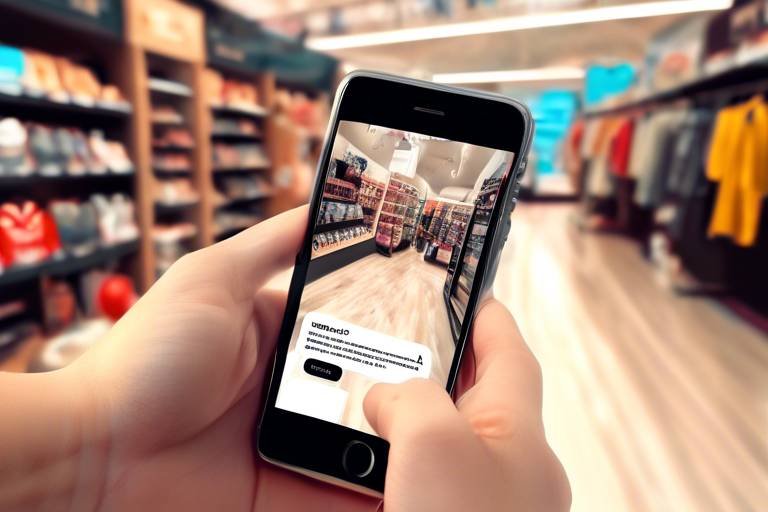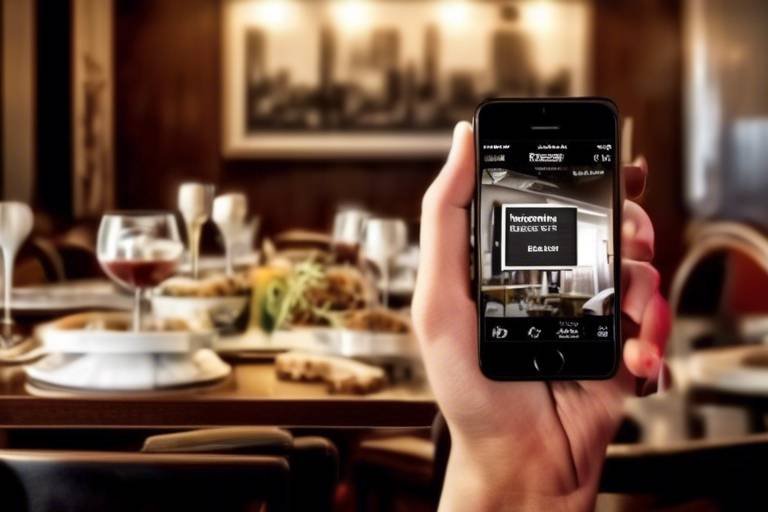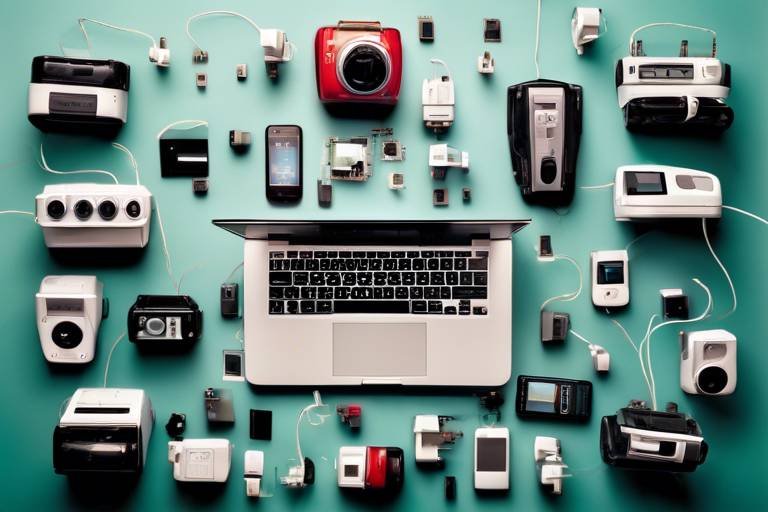How Augmented Reality is Changing Retail Experiences
Augmented Reality (AR) has emerged as a game-changer in the retail industry, fundamentally altering how consumers interact with products and brands. Imagine walking into a store and having the ability to visualize how a piece of furniture would look in your living room or trying on clothes without stepping into a fitting room. This technology not only enhances the shopping experience but also bridges the gap between the physical and digital worlds, creating a seamless integration of both. As AR continues to evolve, it is reshaping the retail landscape, making shopping more engaging, personalized, and efficient.
In recent years, the retail sector has witnessed a significant rise in the adoption of augmented reality. This technology offers innovative avenues for customers to engage with products in ways that were previously unimaginable. Retailers are now leveraging AR to create interactive experiences that capture attention and drive sales. From virtual fitting rooms to immersive product displays, AR is not just a trend—it's becoming a staple in modern retail. The ability to visualize products in real-time and in real-world settings is transforming the traditional shopping model into a more dynamic and interactive experience.
One of the most profound impacts of AR in retail is its ability to enhance customer engagement. By providing immersive experiences, AR fosters deeper connections between customers and products. For instance, consider how a customer browsing for new sneakers can use an AR app to see how different styles look on their feet. This level of interactivity not only reduces uncertainty but also increases satisfaction and loyalty. When customers feel more connected to a product, they are more likely to make a purchase and return for future shopping.
Virtual try-ons are revolutionizing the way consumers shop for clothing and accessories. This feature allows customers to see how items will look on them without physically trying them on. This is particularly beneficial for online shopping, where the inability to try before you buy has historically led to high return rates. With AR, customers can visualize themselves in the product, making informed decisions that reduce the likelihood of dissatisfaction. Imagine a world where trying on outfits is as simple as pointing your smartphone at a mirror—this is the future that AR promises.
Online retailers are capitalizing on AR technology to create virtual fitting rooms. These innovative solutions help customers make better choices, ultimately minimizing return rates and boosting customer satisfaction. By allowing customers to see how clothes fit and look on their own bodies, online retailers can enhance the shopping experience, making it more akin to in-store shopping. This not only helps in reducing costs associated with returns but also builds trust and confidence in the brand.
Physical stores are also utilizing AR to create interactive displays that engage customers in novel ways. For example, a makeup store might use AR mirrors that allow customers to experiment with different shades and styles without needing to apply any product. Such experiences encourage customers to spend more time in the store, exploring products in a fun and engaging manner. This not only enhances the shopping experience but also increases the chances of making a sale.
AR technology enables retailers to offer personalized shopping experiences tailored to individual customer preferences. By analyzing data and utilizing customer insights, retailers can provide tailored recommendations that resonate with shoppers. Imagine walking into a store and receiving personalized suggestions based on your previous purchases or preferences—this is the kind of shopping experience that AR can facilitate. It transforms shopping from a generic experience into a customized journey, making customers feel valued and understood.
Integrating AR into retail strategies can lead to significant boosts in conversion rates, ultimately driving revenue and enhancing customer satisfaction. Retailers who embrace AR are not just keeping up with technological advancements; they are setting themselves apart in a competitive market. The interactive nature of AR encourages customers to engage with products, increasing the likelihood of purchase. As customers become more involved in the shopping process, their connection to the brand deepens, leading to higher loyalty and repeat business.
Another exciting aspect of AR in retail is the gamification of the shopping experience. By incorporating game-like elements into shopping, retailers can create a fun and engaging environment that encourages customers to interact with products. For instance, a store might host an AR scavenger hunt, where customers use their smartphones to find hidden items and earn discounts. Such experiences not only drive sales but also create memorable interactions that customers are likely to share with friends and family.
AR tools provide retailers with valuable data on customer behavior, preferences, and trends. This data is crucial for making informed decisions in marketing and product development. By understanding what customers are engaging with and how they interact with products, retailers can refine their strategies and offerings. This data-driven approach allows retailers to stay ahead of the curve, adapting to changing consumer preferences and ensuring a relevant shopping experience.
Despite the myriad benefits, implementing AR in retail comes with its own set of challenges. The costs associated with AR technology can be significant, and retailers must consider whether the investment will yield a return. Additionally, user adoption can be a hurdle, as not all customers may be comfortable using AR tools. Furthermore, seamless integration with existing systems is crucial for ensuring a smooth transition. Retailers must weigh these challenges against the potential rewards of enhanced customer engagement and increased sales.
- What is augmented reality in retail? - Augmented reality in retail refers to the use of technology that overlays digital information and experiences onto the real world, enhancing how customers interact with products.
- How does AR improve the shopping experience? - AR improves the shopping experience by allowing customers to visualize products in real-time, try on items virtually, and receive personalized recommendations.
- Are there any challenges to implementing AR in retail? - Yes, challenges include technology costs, user adoption, and the need for seamless integration with existing retail systems.
- Can AR help reduce return rates in online shopping? - Absolutely! By allowing customers to virtually try on products, AR helps them make more informed purchasing decisions, leading to lower return rates.

The Rise of Augmented Reality in Retail
Augmented reality (AR) is not just a buzzword; it’s a game-changer in the retail industry. Over the past few years, we’ve witnessed a significant shift in how consumers interact with brands and products. Imagine walking into a store, and instead of just browsing through racks of clothes, you can use your smartphone or smart glasses to see how that trendy jacket looks on you without even trying it on. This is the magic of AR, and it’s becoming increasingly prevalent in retail. Retailers are harnessing the power of AR to create immersive experiences that captivate customers and make shopping more enjoyable.
One of the key drivers behind this rise is the growing demand for personalized shopping experiences. Today’s consumers are not just looking for products; they want experiences. With AR, retailers can offer a unique blend of the physical and digital worlds, allowing customers to interact with products in ways that were previously unimaginable. Think about it: when you can visualize how a piece of furniture will look in your living room or how a new pair of shoes fits your style, the shopping process transforms from a mundane task into an exciting adventure.
The integration of AR into retail strategies is reshaping the shopping landscape in several ways:
- Enhanced Interactivity: AR allows customers to engage with products through interactive displays and virtual try-ons, creating a more dynamic shopping experience.
- Increased Accessibility: With the rise of smartphones, AR technology is accessible to a broader audience, making it easier for retailers to reach their customers.
- Innovative Marketing: Retailers can use AR for creative marketing campaigns that stand out in a crowded marketplace.
Furthermore, the COVID-19 pandemic has accelerated the adoption of AR in retail as consumers shifted towards online shopping. Retailers quickly realized that they needed to adapt to this new normal, and AR provided a solution to bridge the gap between the physical and digital shopping experiences. By incorporating AR features into their websites and apps, retailers can enhance the online shopping journey, making it more engaging and interactive.
In summary, the rise of augmented reality in retail is not just a passing trend; it’s a fundamental shift in how we shop. As AR technology continues to evolve, we can expect even more innovative applications that will further enhance customer engagement and reshape the retail landscape. Retailers who embrace this technology will not only stay ahead of the competition but will also create memorable experiences that keep customers coming back for more.

Enhancing Customer Engagement
In today's fast-paced retail environment, capturing the attention of consumers is more challenging than ever. Enter Augmented Reality (AR), a game-changing technology that is revolutionizing how customers interact with products. By merging the physical and digital worlds, AR creates an immersive shopping experience that not only captivates but also engages customers on a deeper level. Imagine walking into a store and instantly being able to visualize how that new jacket looks on you without even trying it on! This is just one of the many ways AR is enhancing customer engagement.
AR technology allows consumers to immerse themselves in a virtual shopping experience that feels personal and tailored. For example, with the help of AR applications, customers can scan a product and receive instant information, such as reviews, prices, and even styling tips. This level of interactivity fosters a stronger connection between the customer and the product, making shopping not just a chore, but an enjoyable adventure. As a result, customers are more likely to return, increasing brand loyalty and satisfaction.
One of the most exciting features of AR in retail is the concept of virtual try-ons. This technology allows customers to see how products like clothing, eyewear, and makeup will look on them before making a purchase. By using their smartphones or in-store devices, shoppers can visualize how a dress fits or how a pair of sunglasses complements their face shape. This innovative approach significantly reduces the uncertainty that often accompanies online shopping, leading to a more confident buying decision.
Online retailers are particularly benefiting from virtual fitting rooms powered by AR. These digital solutions help customers make informed decisions by providing a realistic preview of how the product will look and fit. This not only enhances the customer experience but also minimizes return rates, which can be a significant cost burden for retailers. In fact, statistics show that retailers utilizing AR for virtual try-ons have seen a decrease in return rates by up to 30%. This is a win-win situation for both consumers and retailers.
But AR isn't just for online shopping; physical stores are also leveraging this technology to create interactive displays. Imagine walking through a store where you can point your phone at a product, and it instantly provides you with information, videos, or even customer testimonials. Such engaging experiences encourage customers to interact with products in a novel way, making their shopping journey more enjoyable. This not only increases the time spent in-store but also enhances the likelihood of making a purchase.
Another exciting aspect of AR is its ability to offer personalized shopping experiences. Retailers can use AR to analyze customer preferences and behaviors, allowing them to deliver tailored recommendations. For instance, if a customer frequently browses athletic wear, the AR application can highlight new arrivals in that category or suggest complementary accessories. This level of personalization makes customers feel valued and understood, ultimately leading to a more relevant shopping journey.
With AR technology, the possibilities for enhancing customer engagement are virtually limitless. As retailers continue to adopt these innovative solutions, the shopping experience will evolve into something far more interactive and enjoyable. By embracing augmented reality, retailers are not just keeping up with trends; they are setting the stage for the future of retail.
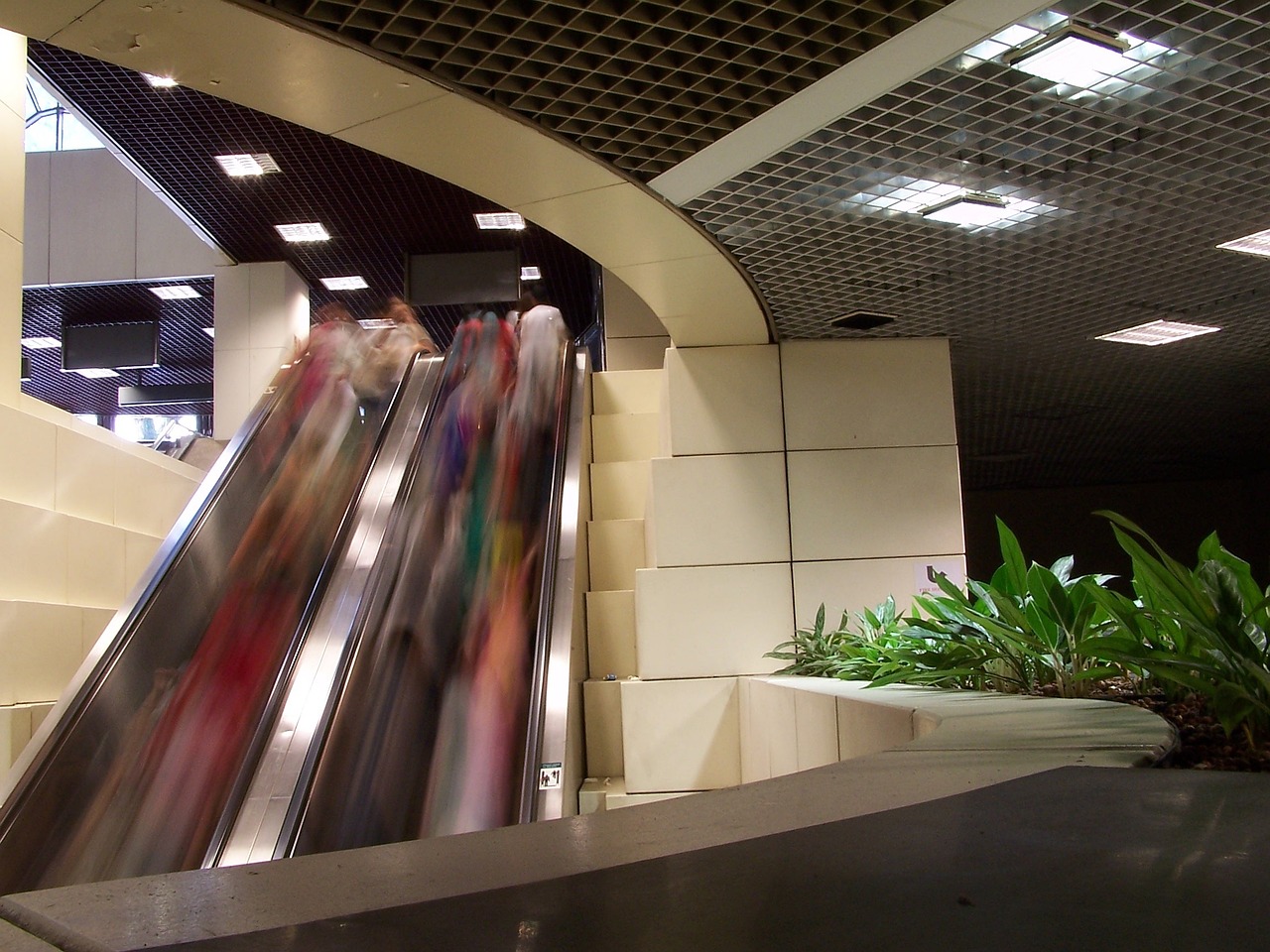
Virtual Try-Ons
Imagine walking into a store and being able to instantly try on any outfit without stepping into a fitting room. are revolutionizing the way we shop, blurring the lines between reality and digital experiences. This innovative technology allows customers to visualize how clothing, accessories, and even makeup will look on them, all from the comfort of their own homes or while browsing in-store. The result? A shopping experience that is not only convenient but also exciting.
With the help of augmented reality, retailers are creating virtual fitting rooms that enable customers to see themselves wearing various styles and colors. This technology utilizes advanced algorithms and facial recognition to overlay products onto the customer’s image in real-time. It’s like having a personal stylist at your fingertips! But how does this impact the shopping experience?
One of the most significant advantages of virtual try-ons is the reduction of uncertainty that often accompanies online shopping. Customers can view how a product looks on them before making a purchase, which leads to a higher level of confidence in their buying decisions. No more guessing whether that dress will fit or if those shoes will match your outfit. Instead, you can see it all in action!
Furthermore, this technology is not just limited to online shopping; it is also enhancing in-store experiences. Retailers are incorporating AR mirrors that allow shoppers to try on clothes virtually while standing in front of a screen. This interactive feature can draw in more customers and keep them engaged, leading to longer shopping durations and, ultimately, higher sales.
To illustrate the impact of virtual try-ons, consider the following benefits:
- Reduced Return Rates: By allowing customers to visualize products before purchasing, retailers can decrease the number of returns, saving both time and money.
- Increased Customer Satisfaction: When customers can see how a product looks on them, they are more likely to be satisfied with their purchase, fostering loyalty.
- Enhanced Brand Engagement: Innovative technology like virtual try-ons can create buzz around a brand, attracting more customers to explore their offerings.
In conclusion, virtual try-ons are not just a passing trend; they are a game changer in the retail landscape. By enhancing the shopping experience with immersive and interactive technology, retailers can create a more engaging environment that resonates with tech-savvy consumers. As this technology continues to evolve, we can only anticipate even more exciting developments in the world of retail.
1. What are virtual try-ons?
Virtual try-ons are augmented reality applications that allow customers to see how clothing, accessories, or makeup will look on them without physically trying them on.
2. How do virtual try-ons work?
They use advanced algorithms and facial recognition technology to overlay products onto the customer's image in real-time, providing a realistic view of how items will look.
3. Can I use virtual try-ons in physical stores?
Yes! Many retailers are now incorporating AR mirrors in their stores, allowing customers to try on clothes virtually while shopping.
4. Do virtual try-ons reduce return rates?
Absolutely! By giving customers a clear view of how products will look on them, virtual try-ons can significantly decrease return rates.
5. Are virtual try-ons only for clothing?
No, virtual try-ons can also be used for accessories, makeup, and even eyewear, enhancing the shopping experience across various categories.

Impact on Online Shopping
In the rapidly evolving world of e-commerce, augmented reality (AR) is making waves by revolutionizing how consumers shop online. Imagine browsing through an online store and being able to virtually try on clothes or see how a piece of furniture would look in your living room—all from the comfort of your home. This is not just a dream; it's the reality that AR technology brings to the table. By integrating AR into their platforms, online retailers are not only enhancing the customer experience but also addressing one of the biggest pain points in online shopping: uncertainty.
One of the key benefits of AR in online shopping is the reduction of return rates. Traditional online shopping often leaves customers feeling apprehensive about whether a product will meet their expectations. With AR, shoppers can visualize products in real-time, leading to more informed purchasing decisions. For instance, a customer can use their smartphone to see how a dress fits their body type or how a new sofa complements their existing décor. This immersive experience builds confidence and satisfaction, which are crucial in fostering customer loyalty.
Moreover, AR tools can provide a personalized experience that enhances customer engagement. Retailers can utilize AR to offer tailored recommendations based on user preferences, browsing history, and even social media activity. For example, if a customer frequently browses athletic gear, the AR interface can showcase the latest running shoes in a way that feels customized just for them. This level of personalization not only captivates users but also increases the likelihood of conversion.
To illustrate the impact of AR on online shopping, consider the following table that highlights some key metrics:
| Metric | Before AR Implementation | After AR Implementation |
|---|---|---|
| Average Return Rate | 30% | 15% |
| Customer Engagement (Time Spent on Site) | 5 minutes | 12 minutes |
| Conversion Rate | 2% | 5% |
This table showcases how AR technology can dramatically change the dynamics of online shopping. The reduction in return rates is particularly significant, as it translates directly to increased profitability for retailers. Additionally, longer time spent on the site indicates that customers are more engaged, which often correlates with higher conversion rates.
As we dive deeper into the world of AR, it's clear that its impact on online shopping is profound and multifaceted. It's not just about trying on clothes; it's about creating an experience that resonates with consumers, making them feel more connected to the products they purchase. The future of retail is here, and it's augmented!
- What is augmented reality (AR)? AR is a technology that overlays digital information, such as images or sounds, onto the real world, enhancing the way we interact with our environment.
- How does AR improve online shopping? AR allows customers to visualize products in real-time, reducing uncertainty and enhancing their shopping experience, which can lead to higher conversion rates and lower return rates.
- Are there any downsides to using AR in retail? Yes, challenges include the cost of technology, user adoption, and the need to integrate AR seamlessly into existing systems.
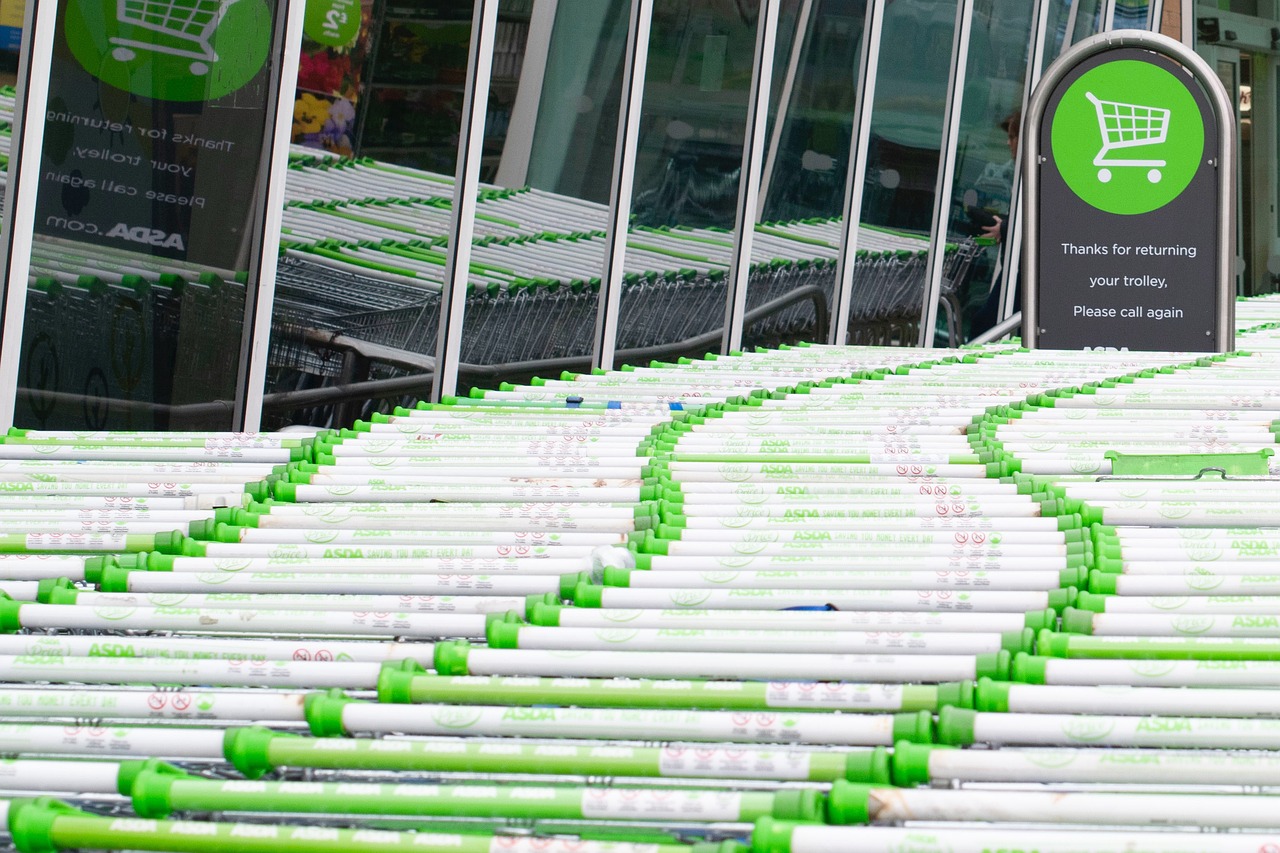
In-Store Experiences
Imagine walking into a store where the products come to life right before your eyes. This is the magic of augmented reality (AR) in in-store experiences! Retailers are harnessing this innovative technology to create immersive shopping environments that not only attract customers but also keep them engaged. Picture this: you enter a clothing store and point your smartphone at a dress. Instantly, you see a virtual model wearing it, showcasing how it flows and fits in real-time. This kind of interaction transforms the mundane act of shopping into an exciting adventure!
AR isn't just about flashy visuals; it's about enhancing the customer journey. Retailers are using AR to develop interactive displays that invite shoppers to explore products in a way that traditional methods simply can't match. For instance, a cosmetics brand might set up a virtual makeup station where customers can try on different shades without ever applying a single product. This not only creates a fun atmosphere but also helps customers make informed choices, reducing the chances of buyer's remorse.
Moreover, AR can guide customers through the store, offering personalized recommendations based on their preferences. Imagine a scenario where you walk past a display, and your device buzzes, suggesting a product that aligns with your past purchases. This level of personalization is not just a trend; it's becoming a necessity in today's retail landscape. Retailers are realizing that by providing a tailored shopping experience, they can foster a deeper connection with their customers, leading to increased loyalty and satisfaction.
In addition, AR can bridge the gap between online and offline shopping experiences. For example, a customer who has previously browsed a retailer's website can receive tailored AR content in-store, making the transition seamless. This integration of online and offline experiences is crucial as consumers seek convenience and personalization in their shopping journeys.
However, implementing AR in physical stores does come with its own set of challenges. Retailers must consider the technological infrastructure required to support AR experiences, which can involve significant investment. Additionally, staff training is essential to ensure that employees can assist customers in navigating these new technologies. But the payoff can be substantial, as AR can significantly enhance the overall shopping experience, driving foot traffic and ultimately boosting sales.
As we look to the future, the potential of AR in retail seems limitless. With advancements in technology and a growing acceptance of AR among consumers, we can expect to see even more innovative applications that will redefine the shopping experience. So, the next time you step into a store, be prepared for a whole new world of possibilities!
- What is augmented reality?
Augmented reality (AR) is a technology that overlays digital information, such as images or sounds, onto the real world, enhancing the user's perception of their environment. - How does AR improve in-store shopping experiences?
AR enhances in-store shopping by creating interactive displays, offering virtual try-ons, and providing personalized recommendations, making the shopping experience more engaging and informative. - Are there challenges in implementing AR in retail?
Yes, challenges include the costs of technology, the need for integration with existing systems, and ensuring staff are trained to assist customers effectively. - What are some examples of AR in retail?
Examples include virtual fitting rooms, interactive product displays, and mobile apps that allow customers to visualize products in their own spaces.
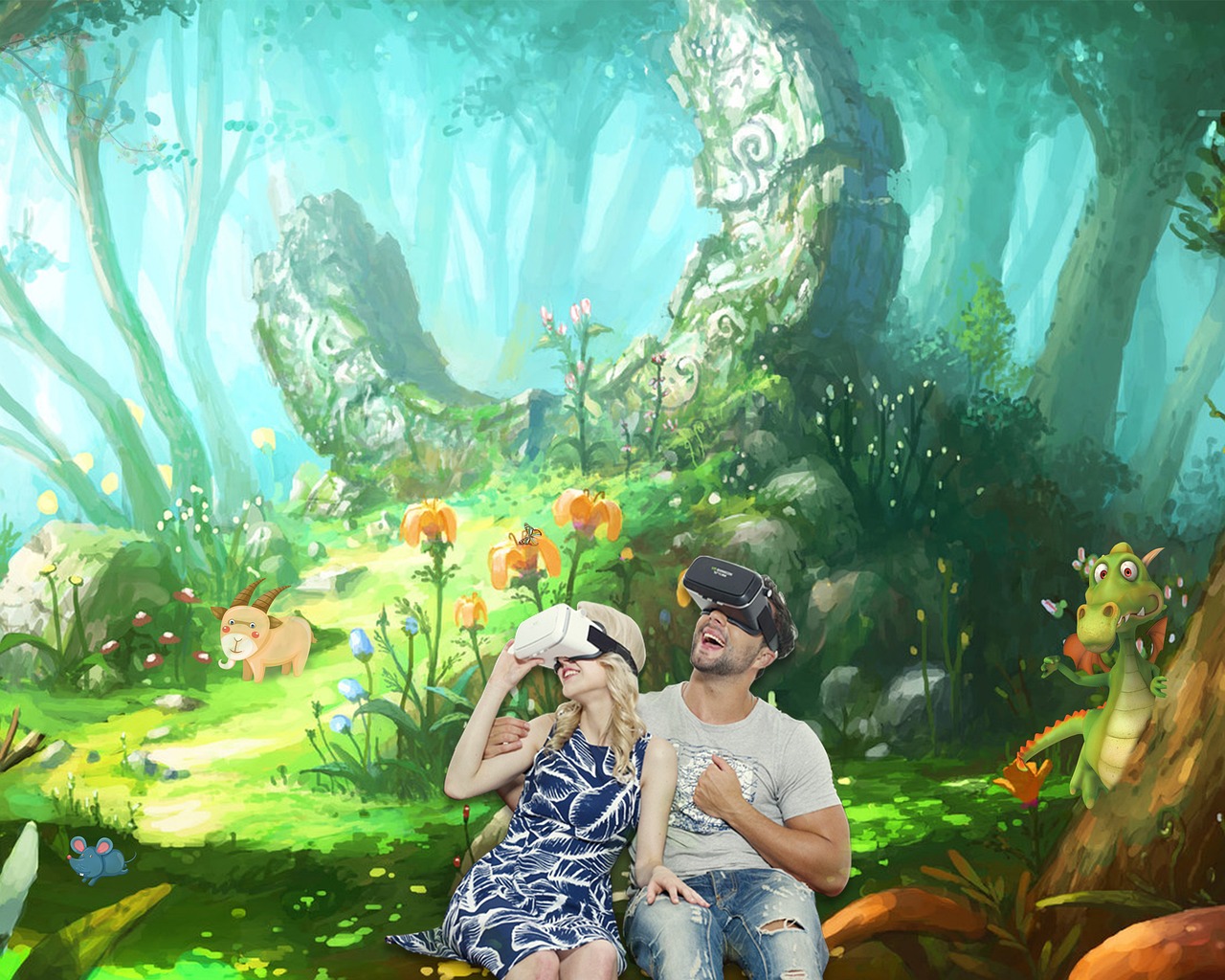
Personalized Shopping Experiences
In today's fast-paced retail environment, customers crave experiences that resonate with their individual preferences and needs. Augmented Reality (AR) is stepping in to fulfill this desire by offering that transform how consumers interact with brands. Imagine walking into a store and having your smartphone recognize your favorite products, displaying tailored recommendations right before your eyes. This is not just a futuristic dream; it's the reality that AR is creating.
With AR, retailers can analyze customer data to understand shopping habits and preferences better. This technology allows brands to create a customized shopping journey for each individual. For example, if a customer frequently purchases athletic wear, AR can highlight new arrivals in that category, showcase limited-time offers, or even suggest complementary items, enhancing the overall shopping experience. This level of personalization not only makes shopping more enjoyable but also builds a stronger connection between the customer and the brand.
Moreover, AR can facilitate a more interactive experience by allowing customers to visualize how products will fit into their lives. Imagine using your smartphone to see how a piece of furniture would look in your living room or how a new pair of shoes would match your outfit. This capability significantly reduces the uncertainty that often accompanies online shopping, making it easier for customers to make decisions. In fact, studies show that personalized experiences lead to higher conversion rates and increased customer loyalty.
To further illustrate the impact of AR on personalized shopping, consider the following table that outlines key benefits:
| Benefit | Description |
|---|---|
| Enhanced Customer Engagement | AR creates immersive experiences that captivate customers and encourage interaction with products. |
| Informed Decision-Making | Customers can visualize products in real-life settings, reducing uncertainty and enhancing confidence in their purchases. |
| Increased Loyalty | Personalized experiences foster deeper connections, encouraging repeat business and brand advocacy. |
As AR technology continues to evolve, it will undoubtedly play an even greater role in shaping personalized shopping experiences. Retailers who embrace this innovation will not only meet customer expectations but exceed them, creating a shopping environment that feels uniquely tailored to each individual. In a world where consumers are bombarded with choices, offering a personalized experience can be the key differentiator that sets a brand apart.
- What is Augmented Reality in retail?
Augmented Reality (AR) in retail refers to the use of technology to overlay digital information onto the physical world, enhancing the shopping experience by providing interactive and personalized features. - How does AR improve customer engagement?
AR enhances customer engagement by creating immersive experiences that allow consumers to interact with products in innovative ways, fostering a deeper connection with brands. - Can AR reduce return rates?
Yes, by enabling customers to visualize products and see how they fit into their lives before making a purchase, AR can significantly reduce uncertainty, leading to lower return rates. - What are the challenges of implementing AR in retail?
Challenges include technology costs, ensuring user adoption, and integrating AR solutions seamlessly with existing retail systems.
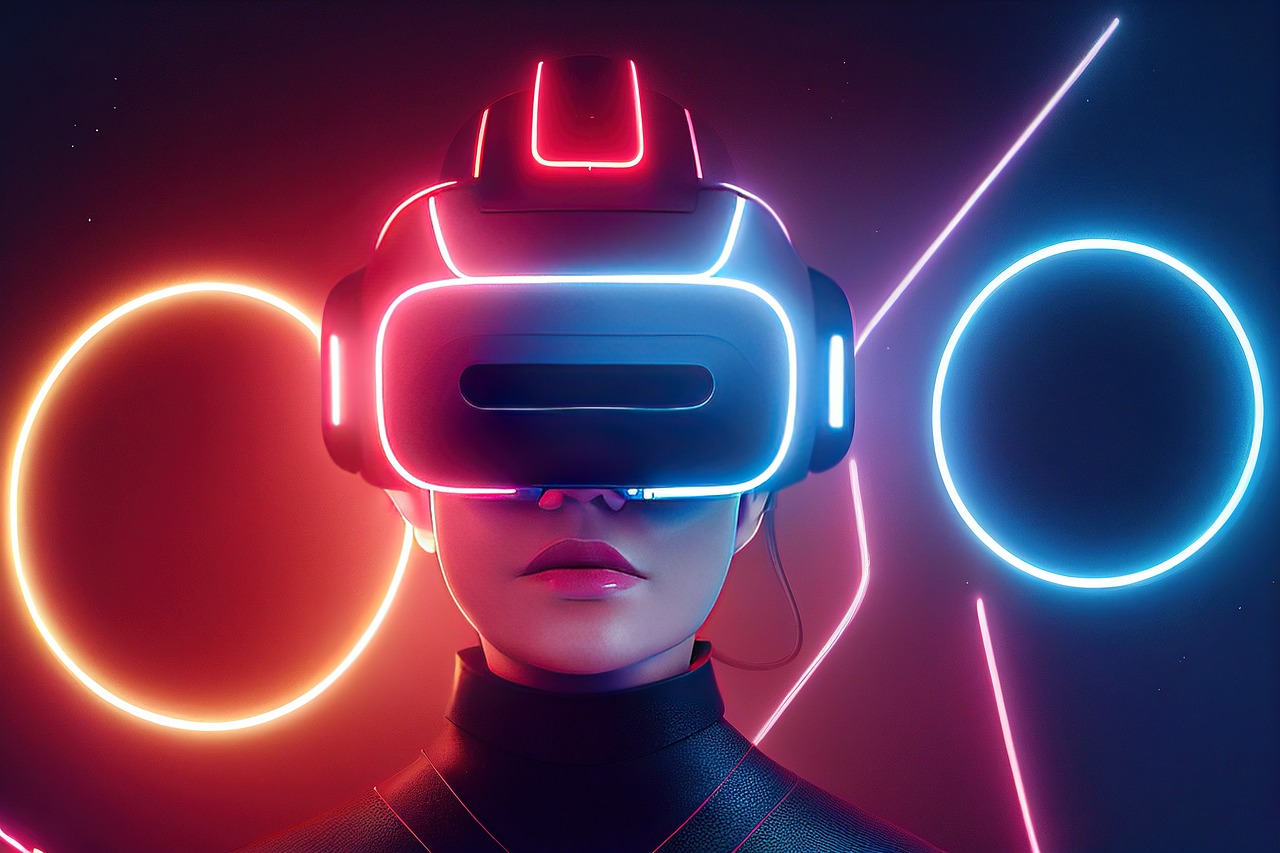
Boosting Sales and Conversion Rates
In the fast-paced world of retail, where competition is fierce and consumer expectations are ever-evolving, augmented reality (AR) emerges as a powerful tool for businesses looking to enhance their sales and conversion rates. By integrating AR into their sales strategies, retailers can create a shopping experience that not only captivates customers but also drives them to make purchases. Imagine walking into a store where you can visualize how a piece of furniture would look in your living room or how a pair of shoes would match your outfit—all through the magic of AR!
One of the most exciting aspects of AR is its ability to gamify the shopping experience. This approach transforms mundane shopping tasks into engaging activities. For instance, retailers can create interactive challenges or scavenger hunts that encourage customers to explore various products. As shoppers participate, they earn rewards or discounts, making the shopping journey not just a transaction but an adventure. This sense of play can significantly increase customer engagement and, ultimately, sales.
Furthermore, AR provides retailers with invaluable data-driven insights into customer behavior. By analyzing how customers interact with AR features, businesses can gain a deeper understanding of preferences and trends. This information is gold for marketing teams, allowing them to tailor campaigns that resonate with their audience. For example, if data shows that customers frequently try on a specific style of jacket virtually, retailers can capitalize on this trend by promoting similar items, thus enhancing conversion rates.
To illustrate the impact of AR on sales and conversion rates, consider the following table:
| AR Feature | Impact on Sales | Conversion Rate Improvement |
|---|---|---|
| Virtual Try-Ons | Increased customer confidence | Up to 30% |
| Interactive Displays | Enhanced product engagement | 15-25% |
| Gamified Shopping | Higher foot traffic and dwell time | 20-40% |
As shown in the table, implementing AR features can lead to significant improvements in both sales and conversion rates. Retailers who embrace this technology are not just keeping up with trends; they are setting themselves apart from the competition. With AR, the shopping experience becomes more than just a transaction—it becomes a memorable journey that customers want to share with others.
However, it’s essential for retailers to remember that while AR can drive sales, it must be implemented thoughtfully. The key is to create a seamless experience that enhances the customer's journey without overwhelming them with technology. The right balance will ensure that customers feel excited and empowered rather than confused or frustrated.
In conclusion, the integration of augmented reality into retail not only boosts sales and conversion rates but also enriches the overall shopping experience. As technology continues to evolve, those who adapt and innovate will undoubtedly lead the way in transforming the retail landscape.
- What is augmented reality in retail? Augmented reality in retail refers to the use of technology to overlay digital information onto the real world, enhancing the shopping experience.
- How does AR boost sales? AR boosts sales by creating engaging, interactive experiences that encourage customers to explore products and make informed purchasing decisions.
- Are there any challenges in implementing AR? Yes, challenges include technology costs, ensuring user adoption, and integrating AR with existing retail systems.

Gamification of Shopping
Gamification has taken the retail world by storm, transforming mundane shopping tasks into exciting adventures. Imagine walking into a store and instead of just browsing the aisles, you’re on a treasure hunt! Retailers are tapping into this concept to create interactive experiences that not only entertain but also engage customers in a meaningful way. This approach is akin to turning a simple grocery run into a fun game, where every product you discover feels like a victory.
At its core, gamification involves incorporating game-like elements into the shopping process. This could mean earning points for every purchase, unlocking discounts after completing certain challenges, or even competing with friends for the best deals. For instance, some brands have developed mobile apps that allow customers to collect virtual badges or rewards for engaging with their products, creating a sense of achievement that keeps them coming back for more.
The beauty of gamification lies in its ability to enhance customer interaction. When shoppers feel like they’re part of a game, their motivation to explore the store or website increases. They become more likely to try new products, participate in promotions, and share their experiences on social media. This level of engagement not only boosts sales but also fosters a community around the brand, as customers enjoy sharing their achievements and competing with one another.
Moreover, gamification can significantly influence purchasing decisions. According to recent studies, customers who engage with gamified experiences tend to make larger purchases. This can be attributed to the emotional connection formed through the game elements, which can turn a simple transaction into a memorable experience. Retailers can leverage this by designing campaigns that encourage customers to explore different sections of the store or try out new products, all while keeping the excitement alive.
Incorporating gamification into retail strategies doesn't have to be complex. Here are a few simple ways retailers can implement this approach:
- Point Systems: Customers earn points for every purchase, which can be redeemed for discounts or exclusive products.
- Challenges and Quests: Create specific tasks for customers to complete, such as visiting multiple departments or trying out new items.
- Leaderboards: Feature top customers on a leaderboard to encourage friendly competition and increase engagement.
In conclusion, gamification is not just a trend; it’s a powerful tool that can reshape the shopping experience. By making shopping more interactive and fun, retailers can not only boost sales but also create lasting relationships with their customers. It’s about turning the ordinary into the extraordinary, and in doing so, retailers can truly stand out in a crowded marketplace.
Here are some common questions regarding the impact of gamification in retail:
- What is gamification in retail? Gamification in retail refers to the use of game-like elements in the shopping experience to engage customers and encourage purchases.
- How does gamification enhance customer engagement? By turning shopping into a game, customers are more likely to interact with products, participate in promotions, and share their experiences, leading to increased loyalty.
- Can gamification really boost sales? Yes, studies show that customers who engage with gamified experiences often make larger purchases and return more frequently.
- What are some examples of gamification in retail? Examples include point systems, challenges, and leaderboards that incentivize customer participation and exploration.

Data-Driven Insights
In the rapidly evolving landscape of retail, have become a cornerstone for success. Augmented reality (AR) tools are not just enhancing customer experiences; they are also generating a wealth of valuable data that retailers can harness to refine their strategies. Imagine being able to peek behind the curtain and see exactly how customers interact with your products, what catches their eye, and what ultimately leads them to make a purchase. This is the power of AR in retail—transforming not just the shopping experience but also the way businesses understand their customers.
With AR, retailers can track a variety of metrics, including engagement rates, time spent on products, and even conversion rates. For instance, if a virtual try-on feature allows customers to spend more time interacting with a product, retailers can analyze this data to understand which items are more appealing and why. This insight can lead to better inventory management and targeted marketing campaigns that resonate with the audience.
Furthermore, the data collected through AR applications can be segmented into different categories, providing retailers with a clearer picture of their customer demographics. For example, insights can reveal trends such as:
- Which age group is most likely to use virtual try-ons?
- What times of day see the highest interaction rates?
- Which products are frequently viewed together?
By analyzing these patterns, retailers can tailor their offerings and promotional strategies to meet the specific needs of their customers. This level of personalization not only enhances the shopping experience but also fosters customer loyalty, as shoppers feel understood and valued.
Moreover, AR can assist in identifying seasonal trends or shifts in consumer behavior. By continuously monitoring how customers interact with AR features, retailers can adjust their strategies in real time. For instance, if data shows a surge in interest for a particular product during a specific season, retailers can ramp up their marketing efforts accordingly, ensuring they capitalize on this momentum.
In conclusion, the integration of AR into retail not only enriches the customer experience but also equips businesses with the insights they need to thrive in a competitive market. The ability to analyze customer behavior and preferences in real time is a game-changer, enabling retailers to make informed decisions that drive sales and enhance customer satisfaction.
- What is augmented reality in retail?
Augmented reality (AR) in retail refers to the use of technology to overlay digital information onto the physical shopping experience, allowing customers to interact with products in innovative ways. - How does AR enhance customer engagement?
AR enhances customer engagement by providing immersive experiences, such as virtual try-ons and interactive displays, which captivate consumers and foster a deeper connection with products. - What are the benefits of data-driven insights from AR?
Data-driven insights from AR help retailers understand customer behavior, preferences, and trends, enabling them to make informed decisions in marketing, inventory management, and product development. - Are there challenges in implementing AR in retail?
Yes, challenges include technology costs, user adoption, and the need for seamless integration with existing systems, which retailers must address to successfully implement AR solutions.
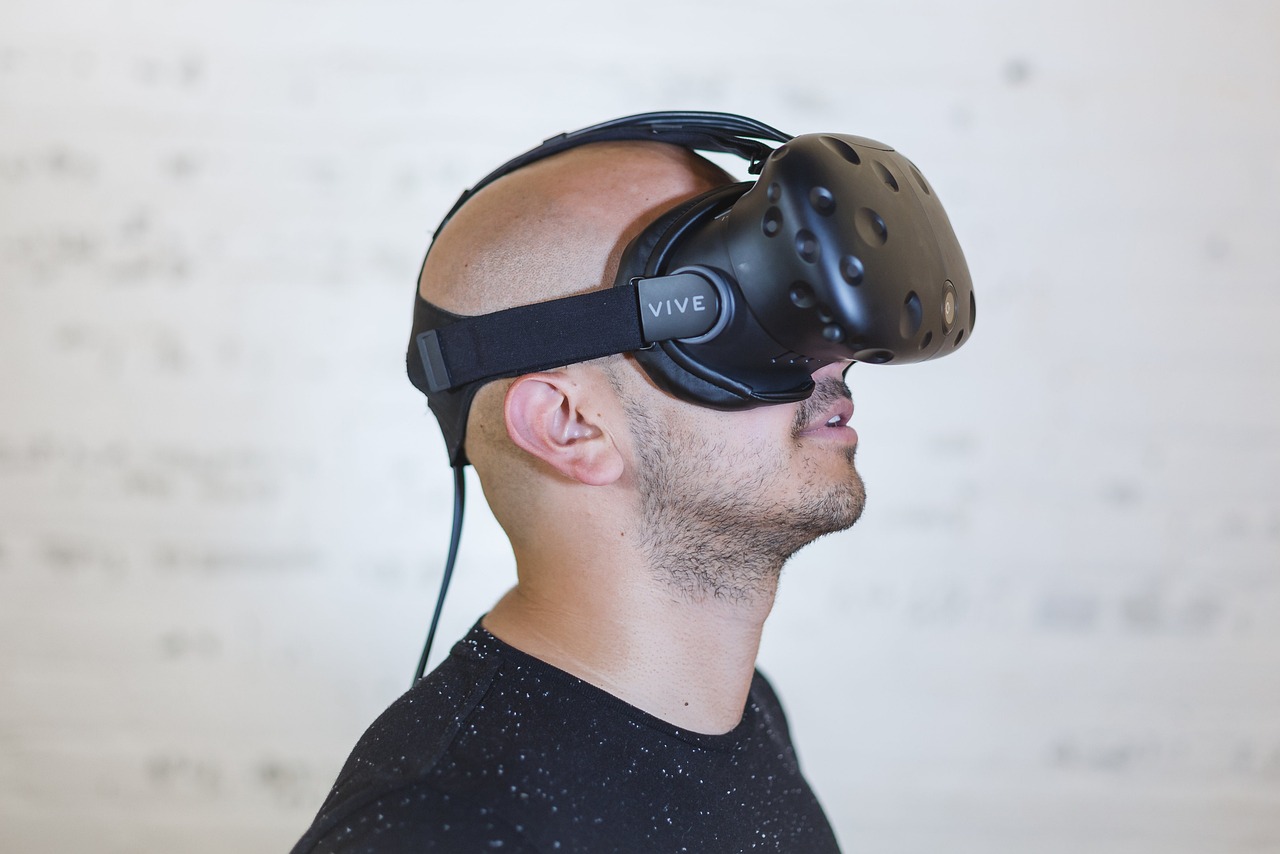
Challenges and Considerations
While the integration of augmented reality (AR) into the retail landscape presents a plethora of opportunities, it also comes with its own set of challenges that retailers must navigate. One of the most significant hurdles is the cost of technology. Developing and implementing AR solutions can require substantial investment, which may not be feasible for smaller retailers. This can create a divide between large corporations that can afford cutting-edge technology and smaller businesses struggling to keep up.
Another key consideration is user adoption. Even though AR can enhance the shopping experience, not all customers are tech-savvy or comfortable using new technology. Retailers must invest in educating their customers about how to use AR features effectively. This could involve creating easy-to-follow tutorials or offering in-store assistance to help customers feel more at ease with the technology.
Moreover, the integration of AR with existing systems can pose a challenge. Retailers need to ensure that their AR solutions work seamlessly with their current e-commerce platforms, inventory management systems, and customer relationship management tools. This requires a well-thought-out strategy and possibly the assistance of tech professionals who can facilitate this integration.
Another consideration is the need for high-quality content. For AR experiences to be engaging, they must be visually appealing and interactive. This necessitates a commitment to creating rich, high-quality content, which can be time-consuming and resource-intensive. Retailers must weigh the benefits of AR against the effort required to maintain an engaging AR experience.
Lastly, there are privacy concerns that retailers must address. As AR technology often collects data on user behavior and preferences, it’s crucial for retailers to implement robust data protection measures. Customers need to feel secure knowing that their information is being handled responsibly. Failure to address these concerns can lead to a loss of trust, which is detrimental to any brand.
In summary, while AR has the potential to revolutionize retail, it’s essential for retailers to carefully consider these challenges. By understanding the costs, focusing on user adoption, ensuring seamless integration, committing to high-quality content, and addressing privacy concerns, retailers can harness the full potential of augmented reality.
- What is augmented reality in retail? Augmented reality in retail refers to the use of technology that superimposes digital information, such as images or sounds, onto the physical shopping environment, enhancing the customer experience.
- How can AR improve customer engagement? AR improves customer engagement by offering immersive experiences, such as virtual try-ons and interactive displays, which foster a deeper connection between customers and products.
- What are the costs associated with implementing AR? The costs can vary widely depending on the complexity of the AR solution, but they typically include development, content creation, and integration with existing systems.
- Are customers ready to adopt AR technology? While many customers are excited about AR, there is still a segment that is hesitant. Retailers should focus on educating customers to enhance adoption rates.
- How can retailers ensure the privacy of their customers when using AR? Retailers can ensure privacy by implementing strong data protection measures and being transparent about how customer data is collected and used.
Frequently Asked Questions
-
What is Augmented Reality (AR) in retail?
Augmented Reality (AR) in retail refers to the use of digital overlays on the physical shopping experience. It allows customers to interact with products in a more immersive way, enhancing their shopping journey by providing virtual try-ons, interactive displays, and personalized recommendations.
-
How does AR enhance customer engagement?
AR enhances customer engagement by creating immersive experiences that captivate consumers. For instance, virtual try-ons let customers visualize how products will look on them, fostering a deeper connection with the items they are considering for purchase.
-
Can AR reduce return rates for online shopping?
Absolutely! By offering virtual fitting rooms, AR helps customers make informed decisions about their purchases. When shoppers can see how a product will fit or look on them, they are less likely to return items, leading to a better overall shopping experience.
-
What are the benefits of AR for in-store experiences?
In-store AR experiences create interactive displays that engage customers in novel ways. Shoppers can explore products through AR apps, making the shopping process more enjoyable and memorable, which can lead to increased sales and customer loyalty.
-
How does AR personalize shopping experiences?
AR can analyze customer preferences and behaviors to offer tailored recommendations. This means that shoppers receive suggestions that are more relevant to their tastes, making their shopping journey feel customized and enhancing their overall satisfaction.
-
What role does gamification play in AR shopping?
Gamification in AR shopping creates a fun and engaging environment that encourages customers to interact with products. By incorporating elements like rewards, challenges, and interactive games, retailers can enhance customer involvement and drive sales.
-
What challenges do retailers face when implementing AR?
While AR offers many advantages, retailers must navigate challenges like technology costs, user adoption, and the need for seamless integration with existing systems. Overcoming these hurdles is essential for the successful implementation of AR in retail.
-
How can AR tools provide data-driven insights?
AR tools can track customer behaviors, preferences, and interactions, providing retailers with valuable data. This information allows businesses to make informed decisions regarding marketing strategies and product development, ultimately leading to improved customer experiences.

